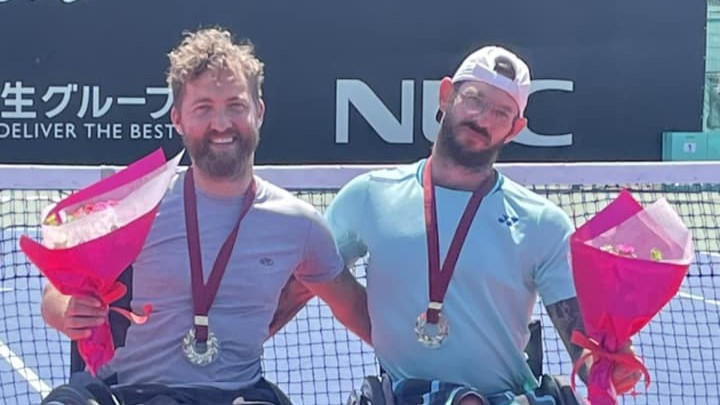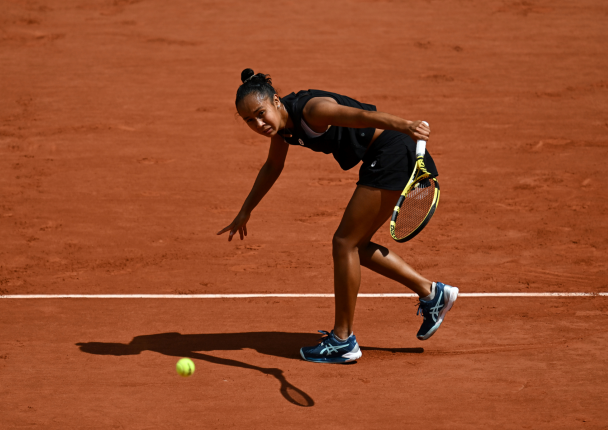
It says something about injured Leylah Annie Fernandez’s indomitable spirit that it took Martina Trevisan 57 more minutes, after her initial match point in the second set, to finally put away her game opponent 6-2, 6-7(3), 6-3 on Tuesday at Roland Garros.
Fernandez who received treatment for a right-foot injury trailing early in the first set, hit a winner to save that match point, won the eventual tiebreak 7-3 and then battled with everything she had for nearly another hour. Finally, Trevisan converted her second match point at the two-hours, 20-minute mark to wrap up the quarter-final encounter in Court Philippe-Chatrier.
The drama began with a medical time-out when a trainer added some bandaging to an area near her toes when she trailed 3-2 in that opening set. It was heightened moments later when her father/coach Jorge made a ‘slitting the throat’ gesture from his courtside seat indicating that she should stop.
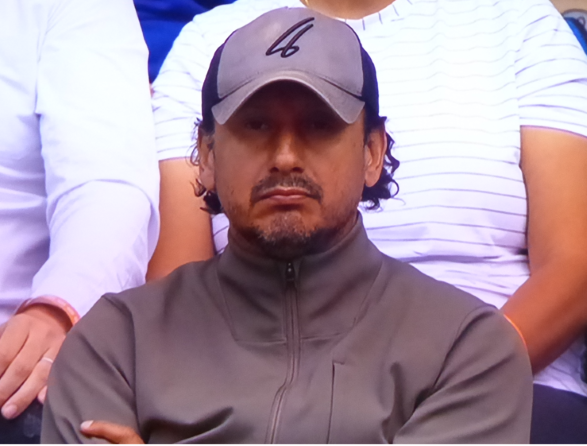
It was no surprise that Fernandez simply ignored him, put her head down and continued to compete as she has done all her professional career – and probably long before that.
After the first set slipped away – she had seven winners and 14 unforced errors to 10 winners and four unforced errors for the 28-year-old Trevisan – Fernandez fell behind 3-1 in the second.
In a reporter’s notebook there was a notation in the second game of the set that she stopped a run to one side ‘carefully’ and also that, though she didn’t limp, there was something a little strange about her walk.
The set went on with Fernandez getting back to 3-all but still looking vulnerable and not going full-out for some shots. Trevisan finally reached that match point serving at 5-4. On the brink of elimination, Fernandez did what she so often does in crisis situations, belted a beauty forehand down-the-line outright winner to remain in the match. She broke serve on a couple of unforced errors by a shaky Trevisan and carried the momentum into the tiebreak that would decide the set. In the tiebreak, Fernandez continued to red-line her game – grabbing a 5-1 lead and winning it 7-3.
A stat early in the third set confirmed that – it showed that she was taking 56 per cent of her shots inside the baseline while that number was only 30 per cent in her previous match.

Trevisan, a surprise quarter-finalist in the 2020 fall pandemic edition of the French Open, went off court for a ‘comfort break’ after the second set. That seemed to help her regain her composure and possibly didn’t do Fernandez any favours because her foot might have swollen or tightened up.
The third set was quickly a run-away for Trevisan. Playing well again, she took 4-0 lead and was actually not credited with an unforced error until the 34th point when she missed a forehand to make it deuce in the fifth game.
Fernandez, who was now visibly limping at times and not running after some Trevisan placements, won the game to get back to 4-1 down. She eventually rallied to 3-5 with an outstanding, back-against-the-wall service game she won to love with four clean winners.
In French there’s the apropos expression “l’énergie du désespoir” (the energy of hopelessness), and Fernandez (fluent in French) seemed to draw on that.
Suddenly tension re-entered the arena and drama reached a crescendo, fueled by the multiple precedents of Fernandez’s coming back from seemingly impossible situations.
But maybe the rush of adrenaline that allowed her to play that amazing eighth game would come at a cost. In the ultimate game with Trevisan serving, Fernandez got to 15-30 but the Italian found one last push – finishing with a good serve that got a forehand return error, a service winner and then a wrong-footing forehand cross-court winner to end the two hour and 20-minute contest.
It was not the ending Fernandez would have wanted – especially in a match that many thought had a good chance to propel her into a second final (2021 US Open) in her last three Grand Slam events. But she had nonetheless showed her bona fides as fearless fighter and competitor on the WTA tour.
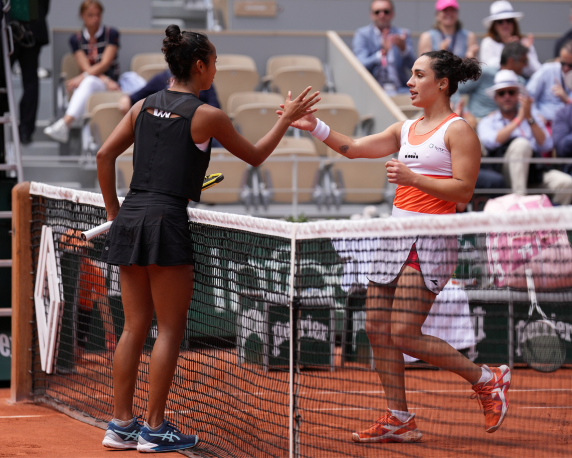
The match wasn’t all about Fernandez. Trevisan led the winners stat 43-29 and deserves credit for essentially continuing to play her regular game despite Fernandez’s issue. That was especially true after the disappointment of not converting that match point in the second set. “On the first match point I felt a little bit more of nervous tension,” Trevisan said. “I thought too much about the match point – that I was at one point to (from) the semi-final. But the important thing is that, after that point, I accepted the situation – that it was normal to feel that emotion. I accepted the situation and went ahead.”
Fernandez was unable to do a media centre interview after the match but did give this comment to WTA staff member about the foot problem: “today was definitely hard luck. I did feel it before the match, but I didn’t think much of it. It just happened and we are just going to have to learn from this.”
She also said about her Roland Garros ’22: “it is a little hard at the moment to find some positives, because of course I wanted to get to the semifinals. But I think I will just have to take a few days and then look back and see what I have done well. We are just going to go from there.”
Her next scheduled event is the June 13-19 grass-court WTA 500 event in Berlin.

Trevisan, named after the great Martina Navratilova, has been through adversity in her career – including a struggle with anorexia in her teenaged years that resulted in four years away from tennis.
During her media conference on Friday, she enthused about the sport, “I like the fight. I like the adrenaline. I like the moment before I get in the court, because there was a lot of energy. So that’s all things that make you alive. So I like it so much.”
You suspect the 19-year-old on the other side of the net from her on Tuesday also feels very much the same way.
INCOMPARABLE ROLAND GARROS & PARIS
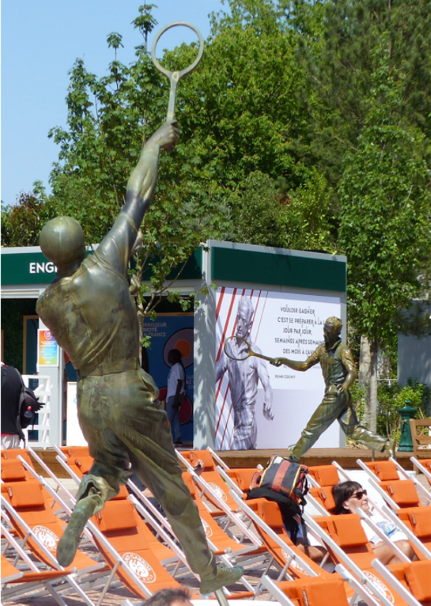
In foreground is one of France’s famous ‘four musketeers’ from the 1920s and 1930s, Jean Borotra, and in the distance is a second musketeer, Henri Cochet. Their success, along with René Lacoste and Jacques Brugnon in winning the 1927 Davis Cup in Philadelphia, directly led to the opening of the Roland Garros tennis grounds in 1928.
Vito Tongiani, the sculptor who created the Borotra statue, said he hoped that one day before the final a player would go touch Borotra’s foot for good luck. No player has done so – as far as we know – but Roger Federer’s agent, Tony Godsick, did in 2009 before his man’s championship match against Robin Soderling. It seemed to work because later that day the great Swiss won his one and only French Open title.
Feature Photo: Martin Sidorjak
